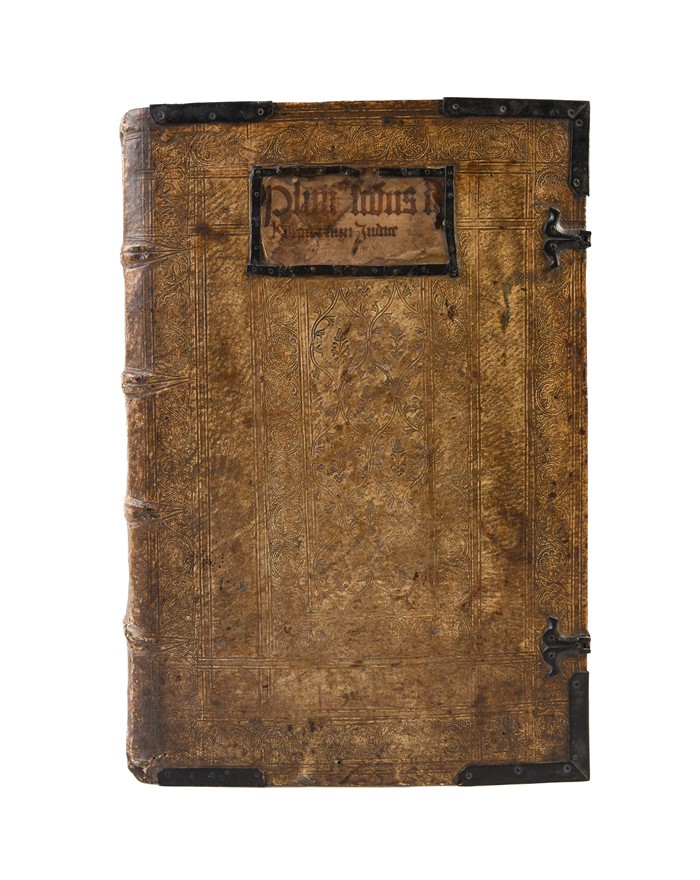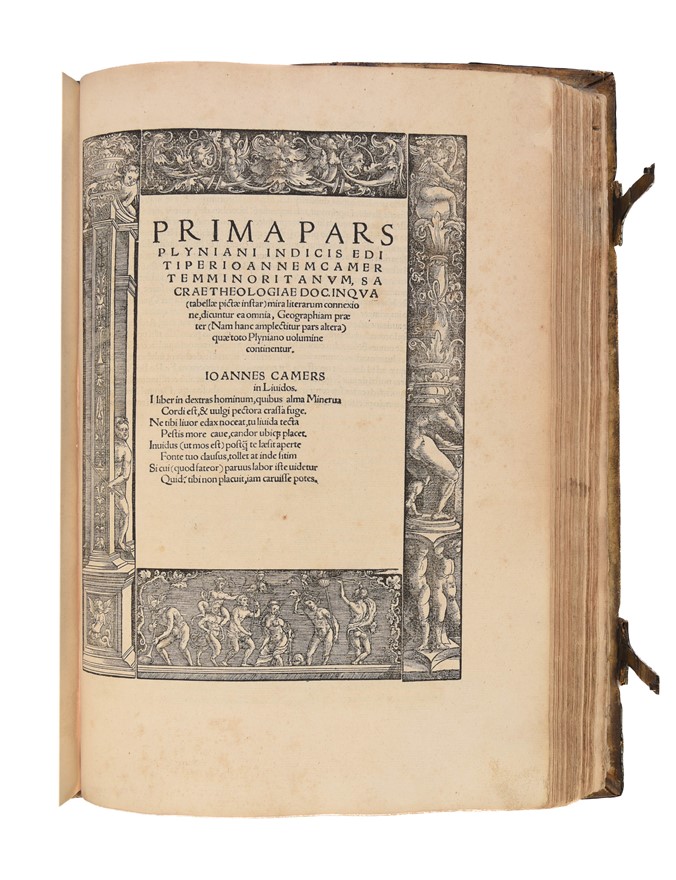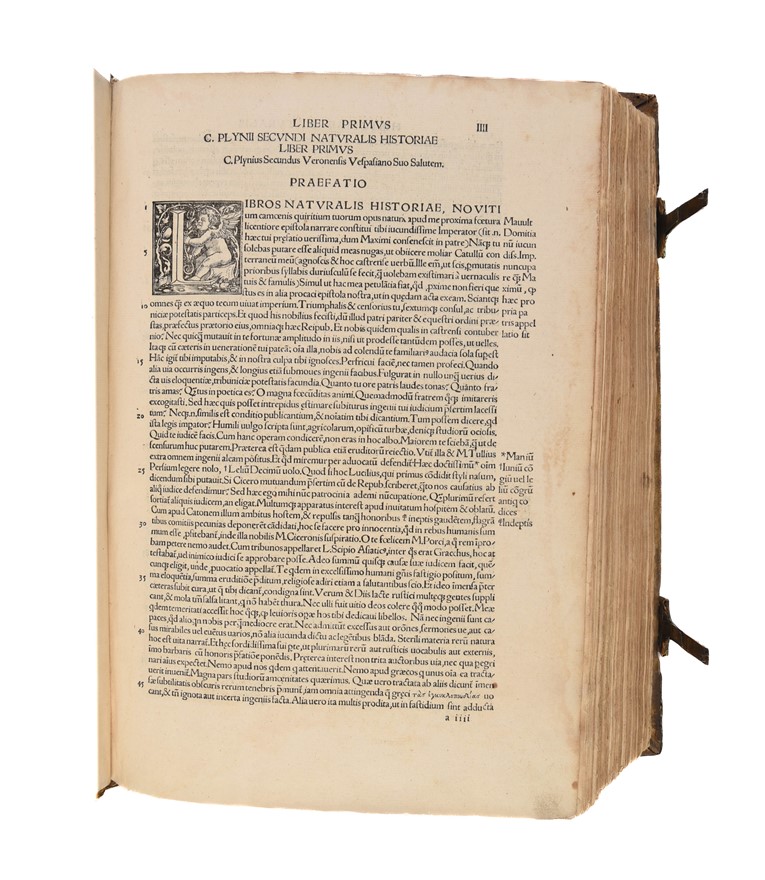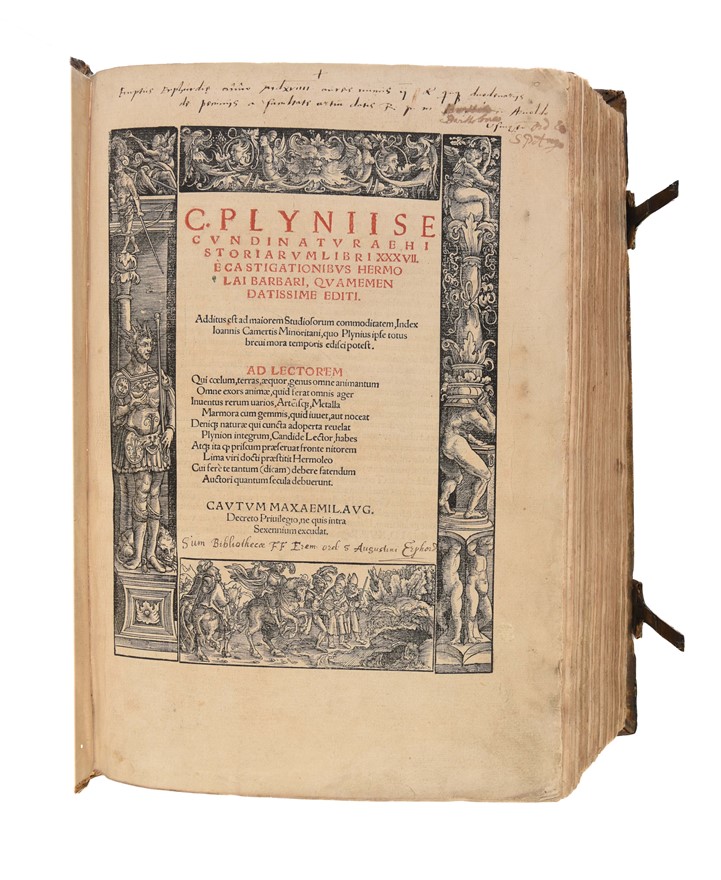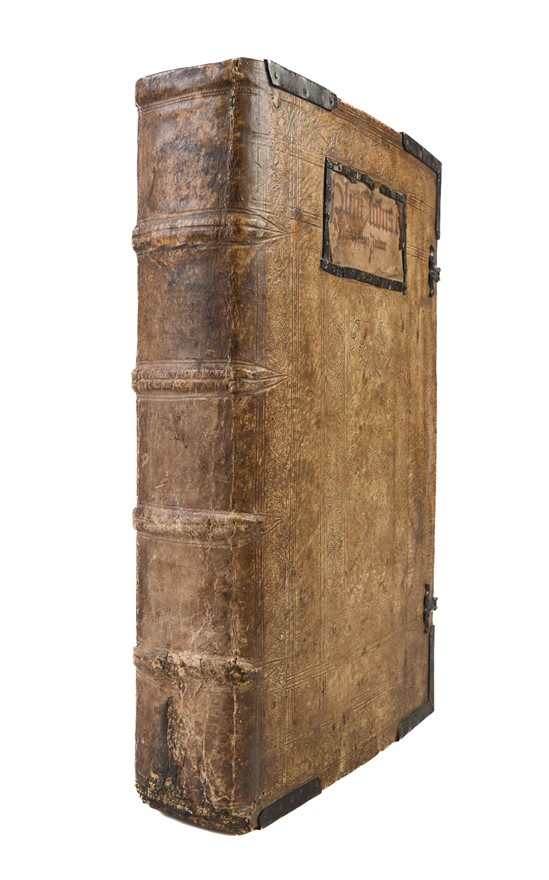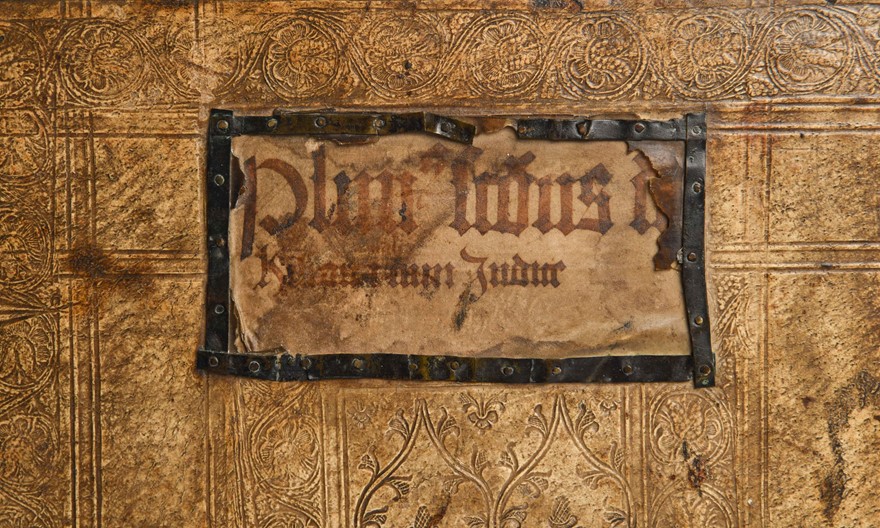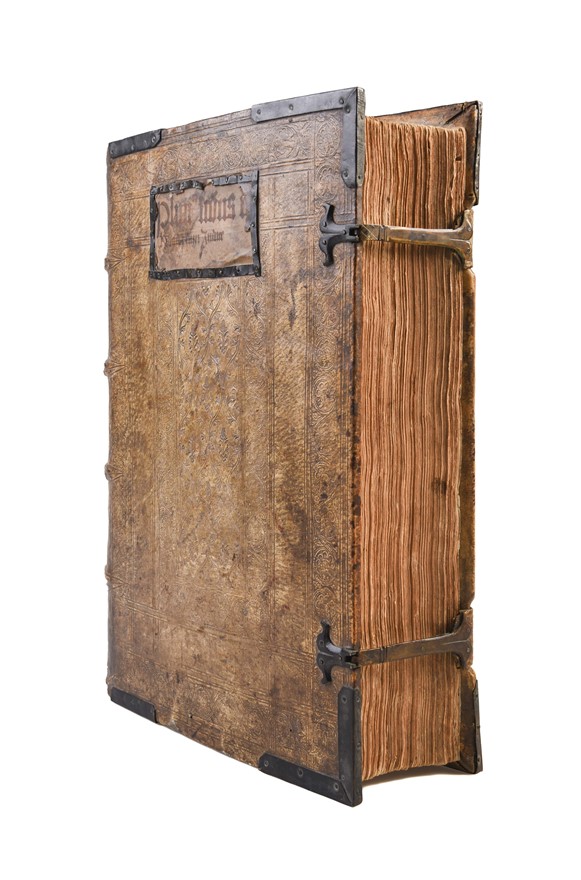Naturae Historiarum libri XXXVII. E castigationibus Hermolai Barbari . . . additus est ad maiorem Studiosorum commoditatem, Index Ioannis Camertis Minoritani.Hagenau, Thomas Anshelm for Joannes Koberger and Lucas Alantsee, Nov.
PLINIUS SECUNDUS (1518.)
£12500.00
OWNED BY LUTHER'S TEACHER AND FUTURE FOE
Each title-page printed within ornamental woodcut border by Hans Springinklee, first title printed in red and black; large printer's device at end of first part, numerous large historiated and ornamental woodcut initials of Hans Baldung Grien.
2 parts in one volume. Folio. 286, [96]ff. Contemporary blind stamped pigskin over wooden boards, with corner and edge brass furniture, front cover with contemporary vellum label with calligraphic manuscript title, set within a narrow brass frame with remains of horn protector, clasps and catches (somewhat rubbed and soiled, rear cover with traces of fixings of a chain, rear cover slightly bowed).
First edition for the German market of one of the most influential works of classical literature, attractively printed in roman types; with a fascinating early association to Martin Luther having belonged to Bartholomäus Arnoldi von Usingen (1464-1532), his tutor at Erfurt.
Since it was published for Joannes Koberger of Nuremberg and Lucas Alantsee of Vienna, it must have been intended for distribution to scholars throughout Germany and beyond. All previous editions had been printed in either Italy or Paris, but this one marked the spread of this work throughout Northern Europe with other editions appearing in Cologne in 1524 and in Basle in 1525.
It is also the first edition to appear with the comprehensive two-part index by Joannes Camers (1468-1546), which first appeared separately in Vienna in 1514. Camers, born as Giovanni Ricuzzi Vellini, was an Italian theologian and Franciscan, and from 1499 became professor at the University of Vienna; most subsequent editions also contained this index. With a dedicatory preface from Jacobus Spiegel addressed to Emperor Maximilian.
Provenance: purchase inscription dated Erfurt 1519 of Bartholomäus Arnoldi von Usingen (1464-1532), Augustinian monk and professor of philosophy at Erfurt university; he taught his fellow Augustinian Luther there, and later fervently argued with him during the early phases of the Reformation. Although he remained loyal to the church he was not against change, "One of the foremost theologians of his time, Usingen combined his defence of the Catholic Church with proposals for reform that would later be discussed at the Council of Trent". (Oxford Encyclopedia of the Reformation).
Bartholomäus Arnoldi von Usingen, “usually called Usingen, after his birthplace, an Augustinian friar, teacher of Luther, and with him inmate of the Augustinian monastery at Erfurt. He received his master's degree in 1491 and was promoted to the doctorate of divinity in 1514. For thirty years he filled the chairs of philosophy and theology at the Erfurt University, and with Jodocus Truttfetter was its most illustrious teacher [they imposed Ockhamist nominalism as the required school of thought]. He stood in high repute for holiness of life, rare intellectual endowments, and unswerving loyalty to the Church. He enjoyed the favour of the younger humanists, was lauded as a dialectician and logician, and was Luther's teacher in both these branches. Luther had an affectionate regard for him and after the Heidelberg Disputation (May, 1518) travelled in his company from Würzburg to Erfurt, during which he made ineffectual efforts to wean him from his ecclesiastical allegiance. In 1521, during the uprising of the mob against the priesthood and the pillaging of their property, he boldly denounced the rioters from the pulpit. In 1522 he delivered a series of sermons in the cathedral in defence of the Church, arraigning the inactivity of the civil and ecclesiastical authorities, and predicted the revolution which finally culminated in the Peasants' War. His anti-Reformation attitude and utterances embittered Luther, who now violently assailed his old teacher. His removal to Würzburg, in 1526, did not interrupt his activity against the innovators. In 1530 he accompanied the Bishop of Würzburg to the Diet of Augsburg. Returning, he died at Würzburg.” (Catholic Encyclopaedia).
Ownership inscription at foot of title-page of the Augustinian monastery at Erfurt..
VD16 P3528. BMSTC (German), p. 704. Not in Adams.
Stock Code: 249740
